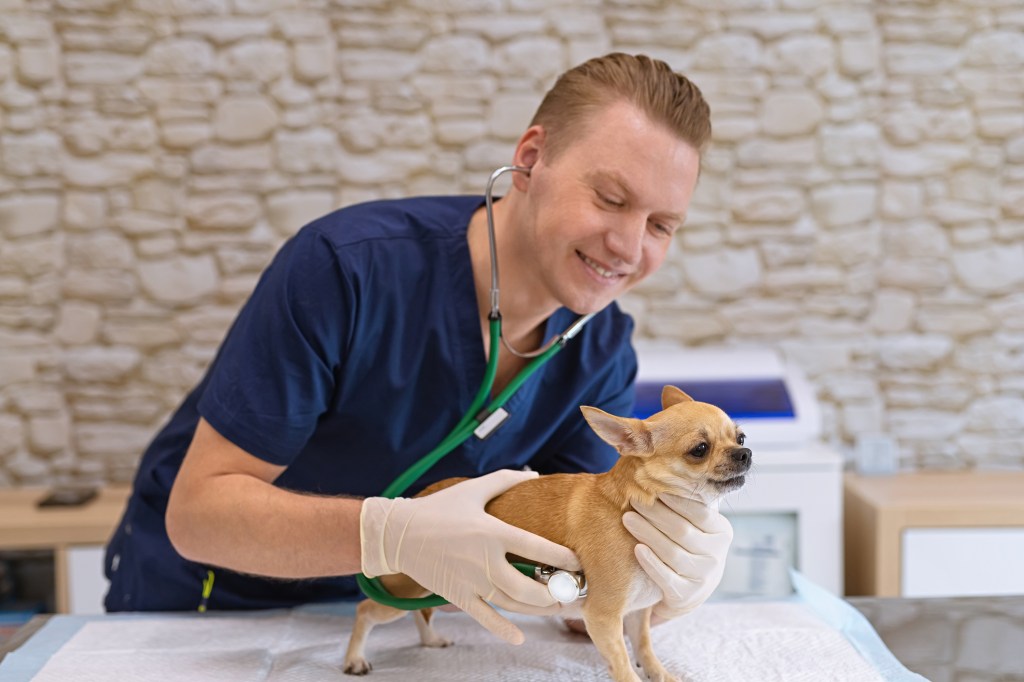Patellar luxation in dogs is a medical condition that causes the kneecap to slip out of its usual position. Generally, the condition can cause lameness and mobility issues. Technically, the disorder is also known as slipped stifles.
Unfortunately, smaller dogs seem to suffer from the condition more than larger pups. For example, the Yorkshire Terrier, Chihuahua, and Pomeranian breeds can be very prone to patellar luxation.
Thankfully, physical therapy can often help treat the condition. Additionally, medication is available to alleviate symptoms.
If you see signs that your dog might be suffering from this condition, then you must consult your veterinarian for a proper diagnosis and course of treatment. Here’s what you should know about the symptoms, causes, and treatments of patellar luxation in dogs.
Symptoms of patellar luxation in dogs
Slipped stifles in dogs can result in a range of symptoms. Specifically, the condition is graded on a scale of one to four, with increasingly severe symptoms.
For example, grade one cases of patellar luxation usually don’t produce symptoms. Grade two produces a degree of lameness. However, grade three brings about increased pain, and grade four affects a dog’s mobility and general limb functions.
Approximately half of dogs who experience slipped stifles will do so in both knees. While only one knee can be involved, dogs may experience different degrees of luxation in both their kneecaps.
Causes of patellar luxation in dogs

The cause of slipped stifles is a dog’s kneecap moving out of place. Generally, the kneecap moves inwards, especially in cases affecting smaller dogs. Curiously, in some cases, the kneecap will naturally return to its normal place.
Generally, injuries involving trauma can cause the condition. Additionally, limb abnormalities can lead to the disorder. In these cases, extra pressure placed on the knee can cause patellar luxation.
Finally, certain breeds seem predisposed to the condition. For example, some of those small breeds include:
- Chihuahua
- Boston Terrier
- Yorkshire Terrier
- Bichon Frise
- Pomeranian
- Miniature Poodle
- Maltese
In recent years, larger breeds have begun to experience patellar luxations. These breeds include:
Treatments for the condition in dogs
If you think that your dog might be developing patellar luxation, your veterinarian will want to carry out a full physical examination of your dog. Additionally, your vet will ask about your dog’s full medical history. This will include any breed-specific problems.
Specifically, your vet will grade the severity of your dog’s patellar luxation based on a physical examination of the knee area. Generally, the grades can be summed up as follows:
- Grade one: The kneecap moves out of place but naturally returns.
- Grade two: The kneecap moves out of place and also causes some lameness.
- Grade three: The kneecap is out of place and only returns if pressure is applied.
- Grade four: The kneecap is permanently out of place.
Usually, treatment for patellar luxation depends on the grade of the disorder. For example, grades one and two can be treated with pain medication and anti-inflammatory drugs. As always, if your vet prescribes your dog any medicine, follow the dose and frequency instructions and complete the full course of medication.
Additionally, weight management and physical therapy can help dogs diagnosed with grades one and two of patellar luxation. Your vet will formulate an appropriate plan for your pup.
However, grades three and four — and sometimes even grade two — can also require surgery. This procedure involves moving the kneecap to its proper location, deepening the groove of the femur bone, and tightening the joint capsule. Additionally, in some cases of slipped stifles, an implant inside the knee can also be added.
Thankfully, dogs who undergo surgery for this condition usually recover very quickly. However, it’s important to follow your vet’s post-surgery advice accurately.















